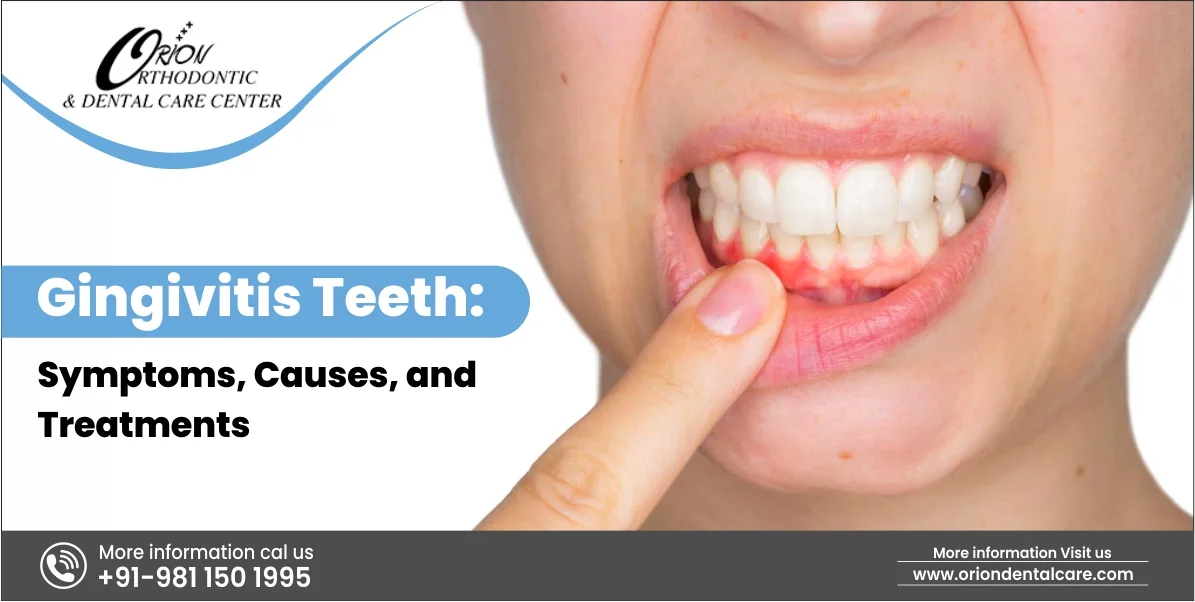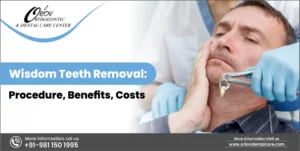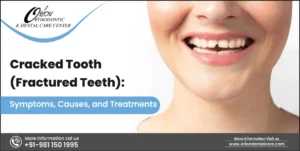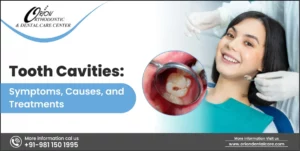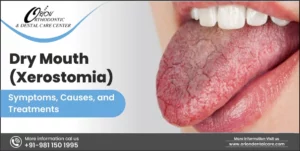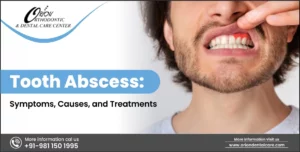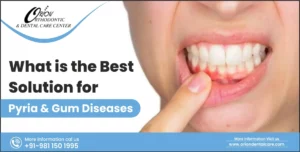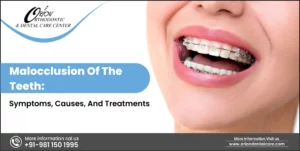They say, “When you put a smile out there, you get a smile back.” That makes the discussion of oral health an important topic here. It goes without saying that neglecting your dental health can cause you problems. One of them is gingivitis.
This inflammatory condition can affect your gums when left untreated. It might have severe consequences, such as periodontal disease. If you are worried about the signs and symptoms of gingivitis, here’s what you must know beforehand.
Understanding Gingivitis – What Is It?
Gingivitis is the initial stage of periodontal disease, a gum disease. This condition develops when tartar, bacteria, and plaque buildup are seen on your teeth, resulting in swollen, bleeding, and red gums. It’s a mild gum disease that accumulates along the gum line.
You can manage the condition with the help of a dentist. However, leaving it unaddressed may result in a more severe gum disease that involves bone loss in the jaw.
While gingivitis isn’t directly contagious, the bacteria causing these conditions can be transmitted from one individual to another. So, individuals with this condition may spread the bacteria via the contact of saliva.
Top Signs and Symptoms Gingivitis
More serious conditions may result in tooth loss and may impact your heart health, diabetes, and respiratory issues. The following are the gingivitis signs and symptoms:
-
Halitosis or Bad Odour
When plaque constantly forms on your teeth, it results in bad breath or halitosis. Plaque builds up (specifically along the gum line) and releases compounds that create an unpleasant odour.
Gingivitis may cause dry mouth, a condition where your mouth does not produce an adequate amount of saliva. Note that saliva washes away the food particles and bacteria inside your mouth. Without enough saliva, bacteria multiply more readily and cause bad breath.
-
Red, Inflamed, and Swollen Gums
How do you spot healthy gums? Well, they are firm and pink. Gums that are affected by gingivitis will become puffy and reddish. Additionally, it may result in bleeding, specifically during flossing or brushing.
-
Receding Gums
Untreated gingivitis may cause receding gums. When gums become inflamed, the tissues connecting the gums to the teeth start to break down. It’s a more complicated condition where the gums start to pull away from the teeth. This creates pockets that trap food debris, thereby worsening inflammation and damaging your gum tissue as well as bone.
-
Tenderness in the Gums
Gingivitis may also make your teeth more sensitive to cold and hot foods. The inner layer of the teeth (right beneath the hard enamel) is the dentin. Dentins comprise microscopic tubules that lead to the tooth’s nerve centre.
Weakened enamel exposes the dentin tubules, allowing external stimuli to reach the nerve centre of the tooth. This results in sudden pain or discomfort. As gingivitis cause receding gums, it exposes the tooth’s root surface, further resulting in sensitivity issues.
Outlining the Causes of Gingivitis
In the early stage, gingivitis is a preventable inflammatory dental issue that affects the surrounding gums around the teeth. But how does gingivitis occur? Well, gingivitis occurs due to the following reasons. Let’s find out the causes of gingivitis from the following:
Plaque Buildup
The primary reason behind gingivitis is plaque. It’s a sticky film of bacteria that forms on your teeth. If you do not remove it through regular brushing or flossing, plaque will harden into tartar. This further irritates your gums and results in gingivitis.
Hormonal Changes
Menstrual cycle, menopause, pregnancy, and other conditions where hormonal changes occur may make gums more prone to inflammation.
Poor Dental Hygiene
It is advisable to brush your teeth at least twice a day. Flossing is also a significant step that prevents the buildup of plaque. Neglecting these practices will cause plaque to accumulate and irritate your gums.
Tobacco Use and Smoking
Chewing tobacco and smoking both can weaken your gums. Additionally, such practices also weaken your immune system’s ability to combat gum infections.
Medical Conditions and Medications
Certain medical conditions, such as diabetes, may increase the chance of gingivitis in the individual. Besides, some medicines also cause dry mouth, further increasing the risks of gingivitis.
Treatment Options for Gingivitis
Are you experiencing the gingivitis symptoms? It’s time to visit a dentist for a checkup. A proficient dental professional will inspect conditions like bleeding, gum recession, loss of teeth, and other signs of infection. After suspecting, the dentist will recommend the treatment.
-
Improved Oral Hygiene
First things first, your dental professional will recommend you to improve your oral hygiene. This includes brushing your teeth at least twice a day with an ultra-soft toothbrush and fluoride toothpaste. You must practice flossing daily to remove plaque and prevent irritation.
-
Root Planing or Tooth Scaling
Scaling and planing are known as deep cleaning in the world of dentistry. While scaling removes bacteria, planing smoothens the surface of the teeth while further preventing bacteria from sticking. This process reaches deeper beneath your gums to mitigate pain or discomfort. You must visit your dentist for professional cleaning a minimum of two times every year to remove stubborn plaque and tartar buildup.
-
Using Antiseptic Mouthwash
An antiseptic mouthwash, besides flossing and brushing, reduces plaque and bacteria buildup. Nonetheless, it’s never a substitute for the above practices.
Preventing Gingivitis – Things to Note
The following are some ways you can prevent gingivitis:
Lifestyle Changes to Follow
Along with the above things, you must change your lifestyle too. If you have a habit of consuming tobacco on a regular basis, it’s time to quit this habit and improve your gum health.
Brush Twice Every Day and Floss Twice a Week
While brushing, thoroughly brush the teeth in a circular motion for two minutes. Practice the method twice every day with an ultra-soft toothbrush as well as fluoride toothpaste. Besides, you should floss daily to reach areas where your toothbrush cannot. Flossing removes food particles and plaque.
Clean Your Tongue Using a Tongue Cleaner
Scraping or cleaning your tongue is an important practice. It removes bacteria that cause bad breath.
| Dental Problem | Treatment | Precautions |
| Tooth Decay (Cavities) | Dental fillings, root canal treatment, dental crowns | – Practice good oral hygiene to prevent further decay. |
| – Limit sugary food and drinks. | ||
| – Attend regular dental check-ups. | ||
| Gingivitis | Professional dental cleaning, improved oral hygiene | – Brush and floss regularly. |
| – Use an antimicrobial mouthwash. | ||
| – Schedule routine dental cleanings. | ||
| Periodontitis | Scaling and root planing, antibiotics, surgery | – Maintain excellent oral hygiene. |
| – Quit smoking to improve gum health. | ||
| – Follow post-surgery care instructions. | ||
| Tooth Sensitivity | Desensitizing toothpaste, fluoride treatments | – Avoid acidic foods and drinks. |
| – Use a soft-bristled toothbrush. | ||
| – Inform your dentist about sensitivity concerns. | ||
| Missing Teeth | Dental implants, Dental bridges | – Follow proper oral hygiene for prosthetic care. |
| – Attend regular follow-up appointments. | ||
| – Avoid biting hard objects to prevent damage. | ||
| Malocclusion | Braces, Invisalign | – Adhere to orthodontic treatment guidelines. |
| – Attend regular adjustment appointments. | ||
| Oral Infections (Abscess) | Drainage root canal treatment | – Complete the full course of prescribed antibiotics. |
| – Follow post-treatment care instructions. | ||
| – Maintain good oral hygiene. | ||
| Bruxism (Teeth Grinding) | Mouthguards, stress management techniques | – Wear a custom-fitted night guard as prescribed. |
| – Manage stress through relaxation techniques. | ||
| Dry Mouth (Xerostomia) | Saliva substitutes, medications to stimulate saliva | – Stay hydrated by drinking water regularly. |
| – Limit caffeine and alcohol intake. | ||
| – Chew sugar-free gum to stimulate saliva production. | ||
| Impacted Wisdom Teeth | Extraction of impacted wisdom teeth | – Follow post-extraction care instructions. |
| – Attend follow-up appointments for monitoring. | ||
| Cracked or Fractured Teeth | Dental bonding, dental crowns, root canal therapy | – Avoid chewing hard objects or ice. |
| – Report any discomfort or changes to your dentist. |
Remember, individual cases may vary, and it’s essential to consult with a dentist for personalized advice and treatment plans.
Conclusion
Suffering from the symptoms of gingivitis? Don’t worry as long as Orion Orthodontic & Dental Care Centre brings the best solution. At the clinic, Dr. Anupam Sinha and Dr. Natalia DeSilva can assist you with their unmatched dental solutions. Make your appointment to understand the treatment for gingivitis.

